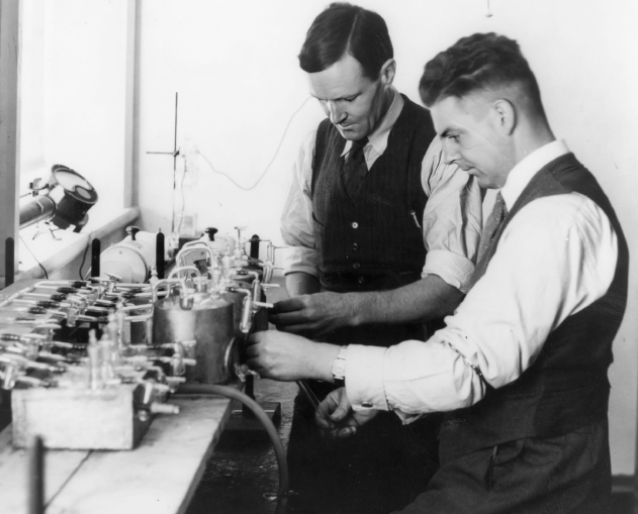Queensland, Australia
July 24, 2024
The colourful history of plant pathology in Australia since colonisation is the subject of special edition of Historical Records of Australian Science, edited by QAAFI’s Associate Professor Andrew Geering.
Despite the challenges of academic isolation and lack of communication, the profession flourished and made many world-first discoveries.

Associate Professor Andrew Geering. Image: Megan Pope
Dr Geering said the issue pays special attention to some of the major plant diseases that affected agriculture in the 19th and early 20th centuries, with several common themes emerging.
“Thre was no scientific specialisation among the early plant pathologists – they were equally adept at researching plant pathogenic bacteria as fungi,” Dr Geering said.
“Joseph Bancroft, the first person to describe Fusarium wilt of banana, was a practicing surgeon in Wickham Terrace in the Brisbane suburb of Spring Hill.
“Secondly, they had to work in isolation, unaware of what was happening in neighbouring states or overseas.
“This makes the discoveries they made even more remarkable.
“Thirdly, the problems of communication and the small scale of research in Australia meant there was slow recognition of the discoveries made here by scientists in the Northern Hemisphere.
“Rupert Best deserved to have been one of Australia’s first Nobel Prize winners for his characterisation of tobacco mosaic virus, but his research was not widely publicised overseas.”
He said despite the success of agriculture in modern Australia, farmers had to overcome many challenges to grow a crop.
“There was extreme weather variability, shallow and infertile soils and attacks by pests and pathogens.
“Early attempts to transplant European farming practices into Australia often failed, and a great deal of scientific research had to be done before the current level of success was achieved.”
Another area of focus of the special issue is biosecurity.
Our plant quarantine system is the envy of the world,” Dr Geering said.

Geoffrey Samuel (left) and Rupert Best (right) in the laboratory at Waite Institute in January 1934. Rupert Jethro Best—Records 1929–68, Reference PRG 232, State Library of South Australia, Mortlock Library of South Australiana, Adelaide. Photographer unknown.
“Richard Davis and colleagues describe the history of the Northern Australia Quarantine Strategy, which has been responsible for providing early warning of plant pathogens like the fungus responsible for black Sigatoka disease in bananas.”
But Dr Geering said some of the articles featured show that history should not be viewed with rose-tinted glasses.
“One striking feature of the early history of Australia is the gender bias towards men in professional life as is shown in the career of Gretna Weste, while racial prejudice was widespread in some farming communities,” he said.
“Australians of Chinese heritage were the pioneers of the Australian banana industry but had to cope with very discriminatory government regulations that were implemented as part of the White Australia policy.
“There was also strong interstate rivalry between the state governments, which hindered a fully collaborative approach to solving plant disease problems.
“In 1923, the Queensland Minister for Agriculture and Stock refused to cross the state border to meet with his counterpart from New South Wales at Tweed Heads to discuss how a research project on banana bunchy top disease could be jointly funded.
“A class system existed between the formally educated and uneducated, and the contributions of lay farmers to solving plant disease problems were sometimes ignored or not properly recognised.”
Articles for this edition are available for full open access on the website for Historical Records of Australian Science.